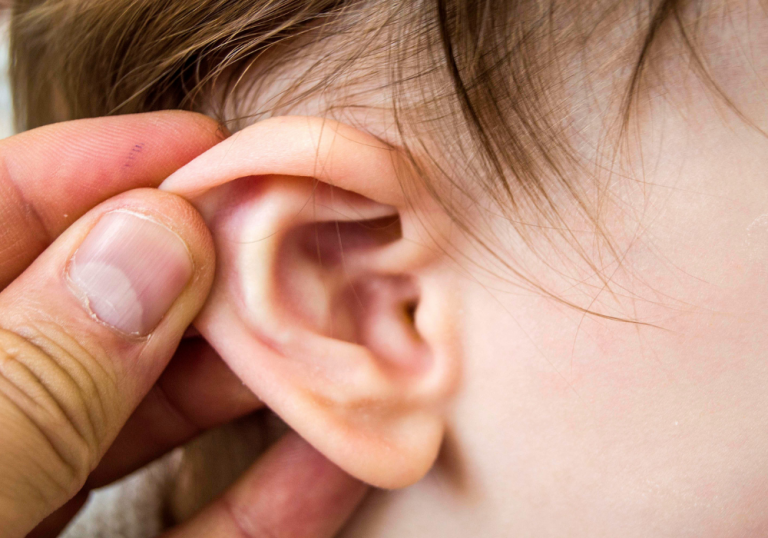

Get your Ear treatment and surgery by the best ENT Specialist in Noida, India
It is an acute inflammation of the middle ear cleft usually with duration of less than 3 weeks. In most cases, it is preceded by a viral upper respiratory tract infection.
Source of infection:

Earache is the most distinct and the commonest symptom of acute otitis media. The earache may be worse in the night, throbbing in nature and severe enough to disturb sleep.
Ear blockage is another common symptom that the patient may present with. Fever may or may not be present.
Acute otitis media in adults: Apart from these symptoms, adults may even notice a hearing deficit in the affected ear. This hearing loss is conductive in nature and reversible with the successful resolution of acute otitis media without any complication.
Acute otitis media in children: Children are the most susceptible age group for developing acute otitis media. The reason is more frequent upper respiratory tract infections and the structure of eustachian tubes (more horizontal ) which make it easier for upper respiratory tract infections to reach the middle ear.
In infants, the presentation may be a little difficult for parents to understand due to the inability of these infants to communicate the pain. So, the parents need to look for other signs of acute otitis media. The child may show inconsolable crying, irritability, refusal to accept feed, repeated ear holding/pulling. In case of any of these symptoms, the parents should take the child for an ENT visit.
Secondly, it is very important to not feed children in supine position as fluid can enter the eustachian tube and then the middle ear. Children should be fed with their heads slightly elevated than the rest of their bodies to prevent fluid entry into the eustachian tube and further into the middle ear.

The treatment consists of: